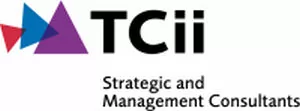What can your salespeople do to increase your sales pipeline with qualified leads? The simple answer is to spend more time:
- networking with friends, colleagues and acquaintances
- attending industry/trade meetings and walking the floor
- securing speaking engagements at local and regional associations or interest groups
- cold and warm telephone prospecting
- direct mail/email/fax prospecting followed up with direct telephone calls.
The most effective way to build one's sales pipeline is to engage in a multi-touch-point campaign combining direct mail introduction and phone calls.
Why a multi-touch-point campaign?
Under what circumstances will prospects accept a telephone call from a salesperson? There has been much research on the subject. The results from one recent survey are shown below.
|
ALWAYS |
USUALLY |
OCCASIONALLY |
NEVER |
|
|
Recommendation from someone inside the company |
16% |
68% |
16% |
0% |
|
Referral from outside the company |
8% |
36% |
44% |
12% |
|
Letter(s) from a salesperson followed by a direct call |
4% |
25% |
40% |
31% |
|
Contact at an off-site meeting |
3% |
16% |
28% |
53% |
|
Direct telephone call from a salesperson |
0% |
8% |
19% |
73% |
This research clearly shows that cold calling doesn't work very well. Although it's an important business development activity, a sales rep could quadruple his or her chances to reach the desired executive if the call was preceded by one or two introductory emails. These messages would sensitise the executives to challenges, pains or goals they could relate to. For the highest return, try a multi-touch-point campaign using email, snail mail and phone calls.
Three steps to a successful campaign
What can your sales director do to increase your pipeline with qualified leads?
To run a productive sales campaign, you need to take the following actions:
- Identify your target territory.
- Create your list of target buyers.
- Empower your salespeople with the right conversational message.
1. Identify your target territory
Many markets have purchasing cycles. For example, there is a five-year cycle in IT purchasing. Therefore, at any given time 20% of your total potential universe of customers are actively looking for a way to improve their operations through the use of your technology. That means 80% are not actively looking at any given time. Other industries may follow a similar cycle.
Do you want to spend your time calling on the same universe that your competition is also calling on, or do you want to spend your resources and energies calling on the 80% that aren't actively looking today?
You can leapfrog your competition if you call on prospects that need your product but aren't actively seeking it first, and help them to discover that they need your offering.
2. Create your list of target buyers
Now, before you even think of sending an email or making a call, it's important to identify whom to call. For each potentially important account, develop a targeted conversational list of people empowered to buy from you. Remember, you can't sell to someone who can't buy and buying is always a committee decision.
3. Empower your salespeople with the right message
How many times have you been delegated down to the project manager just when you started to have a product feature function monologue with a CEO or other C-level executive? Aside from being upset, did you understand why?
People get delegated to people like whom they talk and act. Should you prepare yourself to talk at the level of the title you want to reach? Of course. But many sales executives don't know how to get ready for such calls, nor are they interested in taking the time to prepare.
Marketing is, or should be, responsible for preparing the necessary conversational tools and prompters for salespeople to have intelligent conversations with their prospects' C-level executives. Empower your salespeople with the information and the discipline to have these intelligent conversations.
The salesperson's next steps
Once you have (1) identified your target territory, (2) created a list of buyers to have a conversation with and (3) created the message that will allow your salespeople to engage in intelligent conversations, your salespeople need to:
- write their prospecting letters
- pick up the telephone and call
- manage the rejection that comes with selling
- set aside "sacred time" on their calendar dedicated to prospecting (at least 20% of their time)
- track their response rate and successes
- change their message if it doesn't work
- be prepared to have that conversation if the prospect says: "Tell me more, I'm interested."
Spending an equal amount of time - or more - prospecting with people who aren't yet looking will generate better qualified leads in a less competitive arena, and an easier selling cycle. That said, if you get a call from someone who really wants to buy from you, please take the order.
The content of this article is intended to provide a general guide to the subject matter. Specialist advice should be sought about your specific circumstances.
